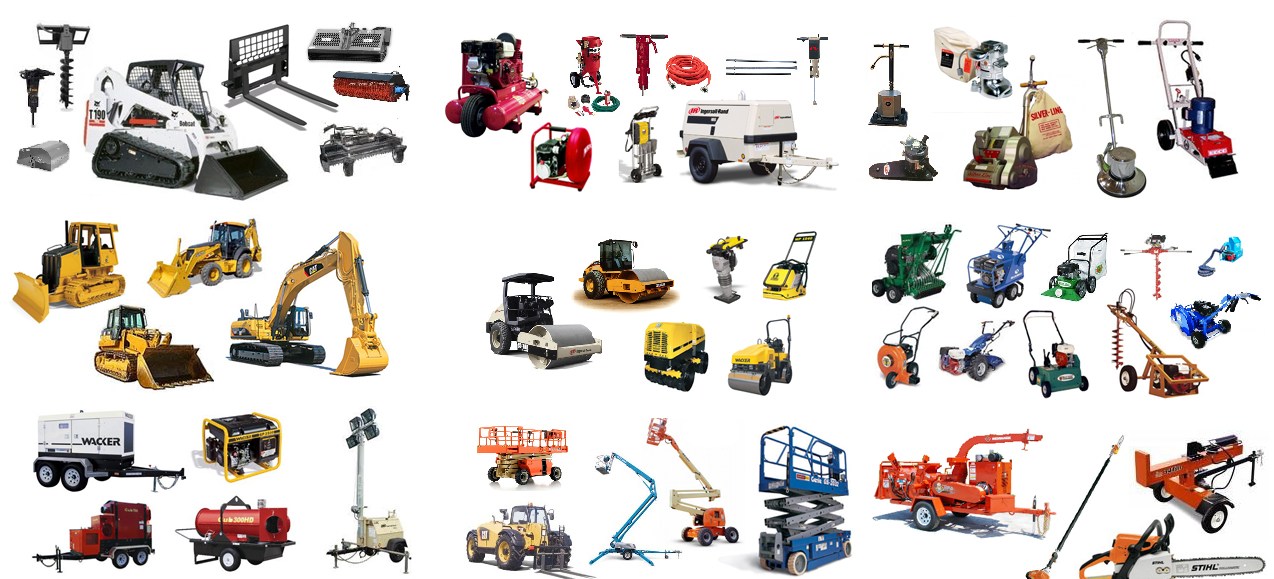Heavy Equipment Rental: Big Equipment for Any Construction Job
Heavy Equipment Rental: Big Equipment for Any Construction Job
Blog Article
Maximize Your Budget by Recognizing the Expenses Related To Building And Construction Equipment Leasings
Recognizing the complete range of expenses related to building equipment rentals is crucial for optimizing your spending plan. While the preliminary rental cost may appear straightforward, numerous added costs-- such as transportation, fuel surcharges, and upkeep-- can swiftly accumulate, influencing your monetary planning. Furthermore, understanding numerous costs and the complexities of rental contracts can assist prevent unforeseen financial concerns. What methods can be utilized to properly handle these expenses and guarantee an extra efficient rental experience?
Review of Rental Expenses
When considering building and construction devices leasings, recognizing the connected costs is extremely important for efficient budgeting and project planning. Rental costs can differ considerably based upon a number of factors, consisting of devices type, period of rental, and place. The initial rental cost commonly reflects the devices's market need and its connected functional capacities, influencing the total expense.
In enhancement to the base rental price, ancillary prices may develop, such as transportation charges, gas additional charges, and upkeep fees. It is essential to represent these added expenses to properly examine the complete cost of leasing tools. The rental period can affect prices; longer services might qualify for affordable prices, while temporary rentals might incur higher everyday costs.

Failure of Rental Prices
A thorough understanding of rental prices is essential for contractors and project supervisors intending to optimize their spending plans. Rental rates for building and construction equipment typically include several components, consisting of base prices, time-based costs, and use charges.
Base prices are the core charges linked with the service of the equipment, often established by the type and dimension of the equipment. These prices can differ considerably, influenced by elements such as tools need, availability, and regional market patterns. Time-based charges, which might be daily, weekly, or monthly, serve to suit different project timelines and rental durations.
Additionally, rental rates may include use costs, which apply when tools is used past a defined threshold, making sure that the rental firm can represent damage. Seasonal demand changes can likewise impact rental prices, with peak building and construction periods generally commanding greater prices.
In addition, comprehending the rental company's plans concerning upkeep and insurance can provide additional insight into the general price framework. By examining these components, professionals can make enlightened decisions, ensuring the choice of rental tools lines up with both project demands and spending plan constraints.
Added Costs to Take Into Consideration
Understanding the ins and outs of extra costs is crucial for professionals to handle their general service costs properly. Past the basic rental prices, various supplementary costs can substantially affect the overall cost of devices service. These costs frequently consist of shipment and pick-up charges, which can differ based upon distance and logistics included in transporting the tools to and from the task site.
In addition, some rental firms might enforce gas additional charges if the devices is returned with less fuel than when rented. It is also crucial to be aware of possible cleaning costs, especially for specialized equipment that needs comprehensive maintenance after usage.

Completely evaluating the rental contract and clearing up these extra costs upfront can help specialists make sure and prevent unforeseen prices that budgets stay intact throughout the job lifecycle.
Repair And Maintenance Expenditures
Regular upkeep and repair work costs are usually forgotten variables that can his comment is here considerably affect the overall expense of construction tools rentals. When renting out devices, it is critical to consider not just the rental costs yet additionally the prospective prices linked with maintaining the machinery in optimum operating condition.
Many rental business consist of standard upkeep as component of the rental agreement; nevertheless, much more substantial repairs or unexpected failures can bring about added costs. It's necessary to examine the rental agreement carefully to understand what upkeep solutions are covered and what responsibilities fall on the tenant.
Additionally, tools that is not properly maintained can bring about ineffectiveness on duty site, possibly causing delays and raising task costs. To mitigate these dangers, it is recommended to perform routine inspections and maintain open communication with the rental copyright pertaining to any issues that emerge during usage.
Insurance and Responsibility Prices
Insurance coverage and responsibility prices are vital elements that can significantly impact the general expenditure of construction equipment services (mini excavator rental). These prices ensure that both the rental business and the customer are secured from prospective financial losses emerging from accidents, damages, or theft throughout the rental period

Additionally, clients should recognize any kind of deductibles or exclusions in the insurance heavy duty roller conveyor coverage policy, as these can impact potential out-of-pocket expenditures. Recognizing the conditions of any insurance protection is crucial to prevent unforeseen costs. Eventually, budgeting for insurance and responsibility expenses can help make certain a smoother rental experience and protect against financial risks linked with building and construction projects.
Conclusion
In verdict, a detailed understanding of the expenses connected with construction tools leasings is important for reliable budget plan administration. Ultimately, educated decision-making relating to equipment rentals contributes to the total success of building undertakings.
Rental prices can vary substantially based on a number of factors, including tools kind, period of leasing, and place (boom lift rental). The rental period can affect prices; longer services may qualify for discounted prices, while short-term rentals may incur greater daily charges
By performing detailed research and involving with trustworthy rental business, contractors can effectively browse the intricacies of rental prices, ultimately maximizing their monetary sources.
Beyond the conventional rental rates, various supplementary fees can substantially affect the complete cost of devices leasing. Rental business frequently provide responsibility insurance coverage that covers injuries to third parties or damages to property, while devices damage insurance policy can cover the price of repair services or substitute if the rented tools is damaged.
Report this page